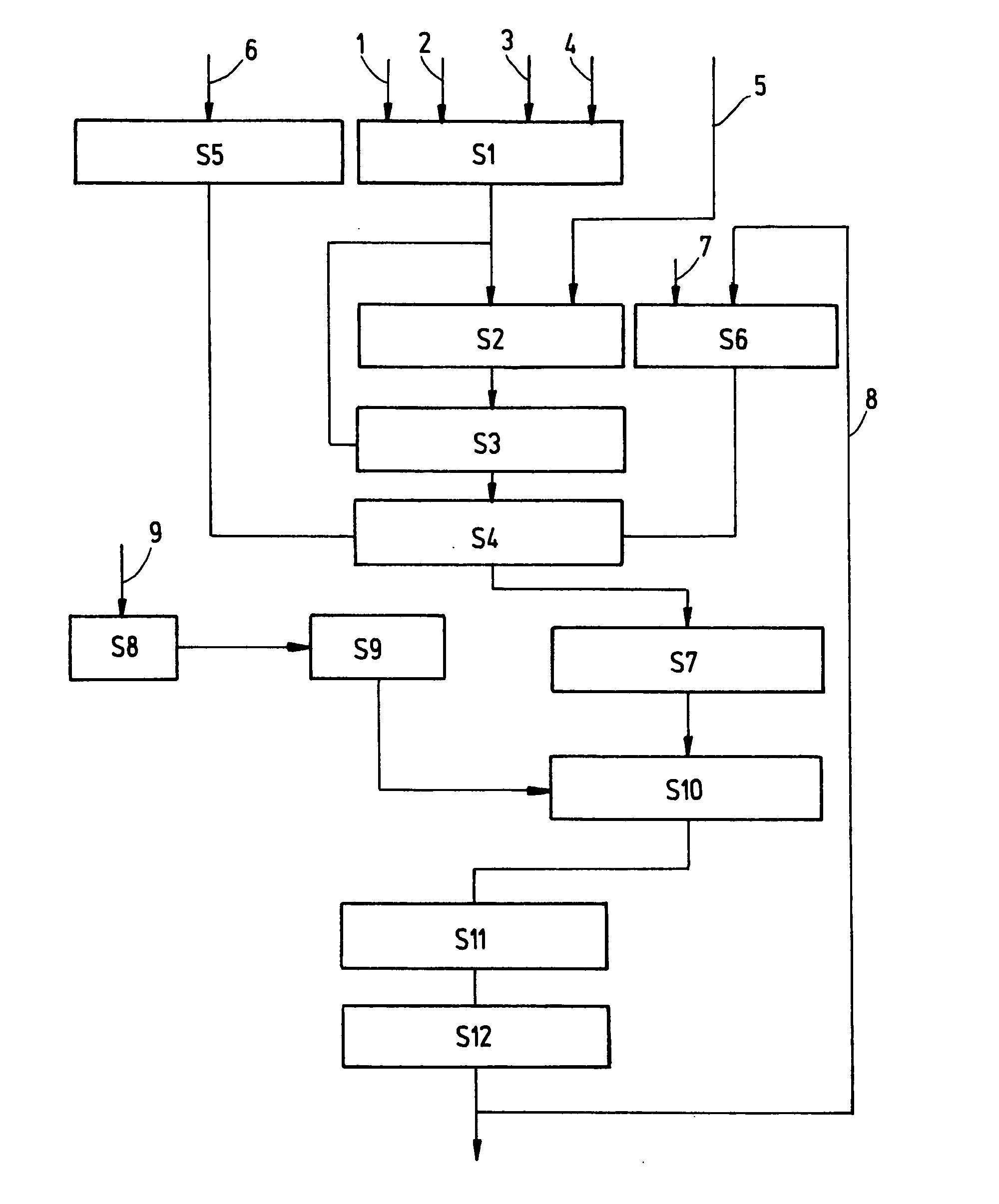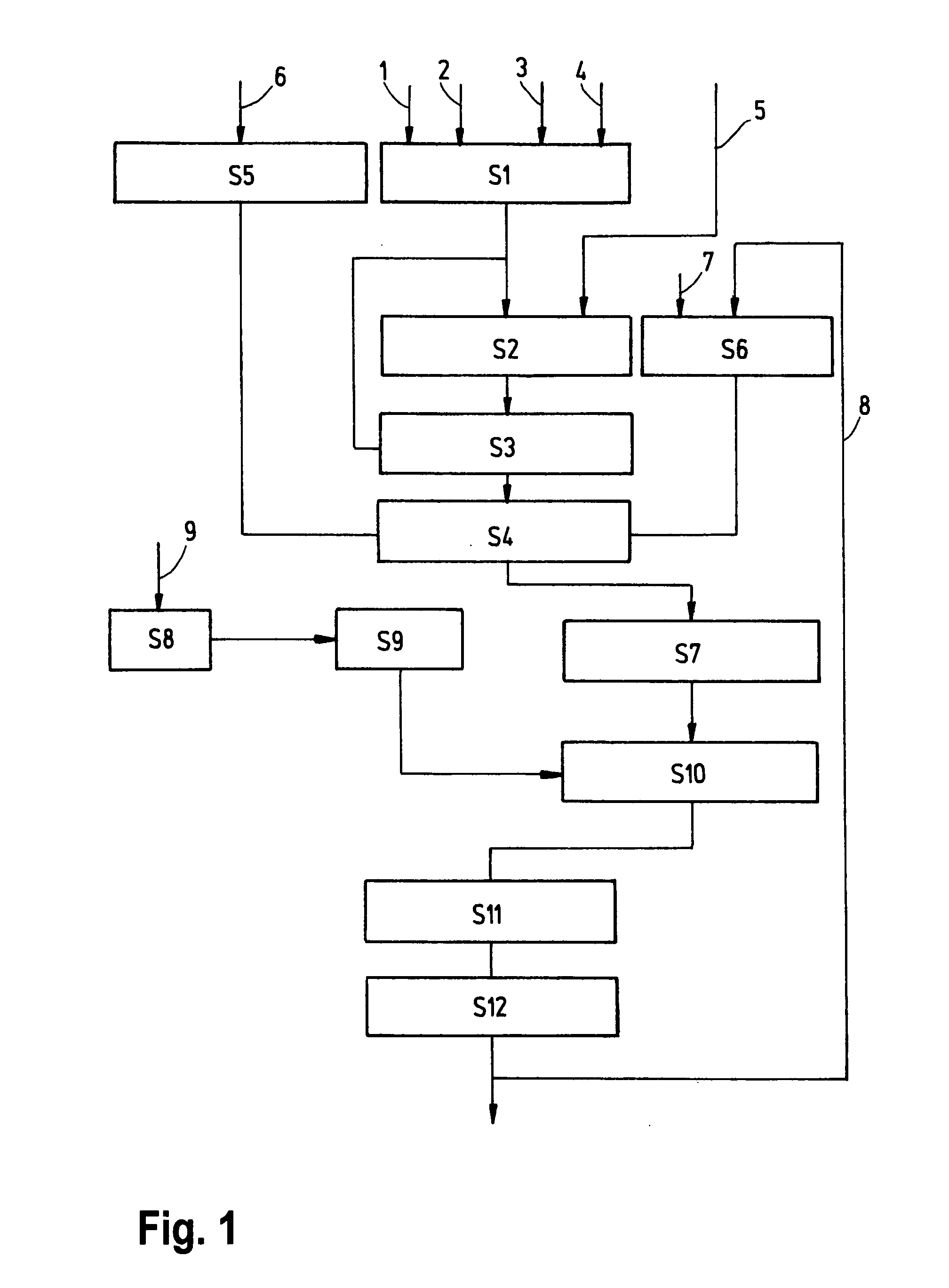Method for determining an estimate of the mass of a motor vehicle
a technology for motor vehicles and mass estimates, applied in the direction of braking systems, process and machine control, instruments, etc., can solve the problems of inaccurate values, low error in computation of adhesion coefficients, and inability to increase the pressure on the rear axle wheels, etc., to achieve the effect of precise estimation of the mass of the motor vehicl
- Summary
- Abstract
- Description
- Claims
- Application Information
AI Technical Summary
Benefits of technology
Problems solved by technology
Method used
Image
Examples
Embodiment Construction
The flow chart in FIG. 1 shows an exemplary method of the present invention for determining an estimate of the mass of a motor vehicle. The estimate of the mass is determined at intervals of a few milliseconds by an Electronic Stability Program (ESP) stored in an on-board computer of the vehicle. The most recent value determined is used by the ESP system to control the brake system of the motor vehicle, being used in particular for correcting adhesion coefficient μ as a function of the load state of the vehicle and for improving its electronic braking force distribution, as explained in greater detail below.
To determine the estimate of the mass of the vehicle according to the method described below, a series of coefficients such as air resistance coefficient Cw, cycle time T of the ESP system, cross-sectional area A of the vehicle exposed to oncoming flow, wheel moment of inertia Jwheel, empty vehicle mass mFmMin, etc. are needed; these coefficients depend on the particular vehic...
PUM
 Login to View More
Login to View More Abstract
Description
Claims
Application Information
 Login to View More
Login to View More - R&D
- Intellectual Property
- Life Sciences
- Materials
- Tech Scout
- Unparalleled Data Quality
- Higher Quality Content
- 60% Fewer Hallucinations
Browse by: Latest US Patents, China's latest patents, Technical Efficacy Thesaurus, Application Domain, Technology Topic, Popular Technical Reports.
© 2025 PatSnap. All rights reserved.Legal|Privacy policy|Modern Slavery Act Transparency Statement|Sitemap|About US| Contact US: help@patsnap.com



